Have a Lenovo ThinkStation Desktop P500, P700, or P900 with an M.2 SSD drive?
Having trouble getting Windows 7 (or other OS) to install as boot drive?
I’ll walk you through updating the BIOS and reinstalling the OS, which solved my problem.
See End of Post for Review of Lenovo ThinkStation P500 as 3D CAD Workstation, and Details on How I Configured the Machine

Nature of this Problem: PCIe SSD Not Factory Installed as Boot Drive (or) A Minor BIOS Change Makes Computer Unable To Find Boot Drive
I recently got a new 3D CAD workstation desktop, a Lenovo P500 ThinkStation. I ordered an option that I’ve never used before, a 250GB M.2 SSD card. It interfaces with a “Flex Adapter” riser board plugged into a PCI express 4x lane slot. (Well, I found out it’s not JUST a PCIe x4 slot, it’s a “FLEX CONNECTOR,” and also can handle USB signals or something – more on that in the last section). This was to be set up as my boot drive, with Windows 7 x64 as the operating system (“downgrade rights” from Windows 8.1 Pro).




Well, I’m not sure what all happened with the ordering of this configuration through our IT dept., but apparently this step didn’t happen at the factory. So we had to get the M.2 SSD going and install Win7 on it as the boot drive. This turned out to be an odyssey of mythical proportions. And I’m not going to get into most of the stuff that happened (I’ll just say there were no Sirens to speak of).
Zooming in to show the PCIe “FLEX ADAPTER” mezzanine board with a M.2 PCIe SSD installed (the other M.2 SSD slot next to it is for SATA type M.2 SSD cards)
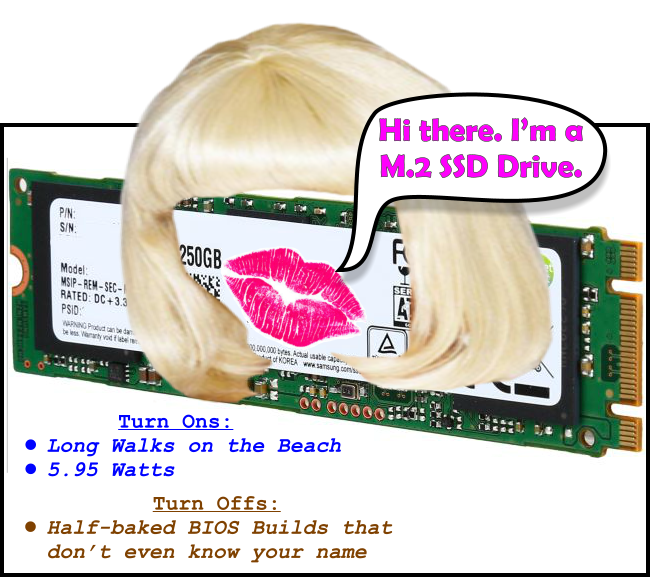
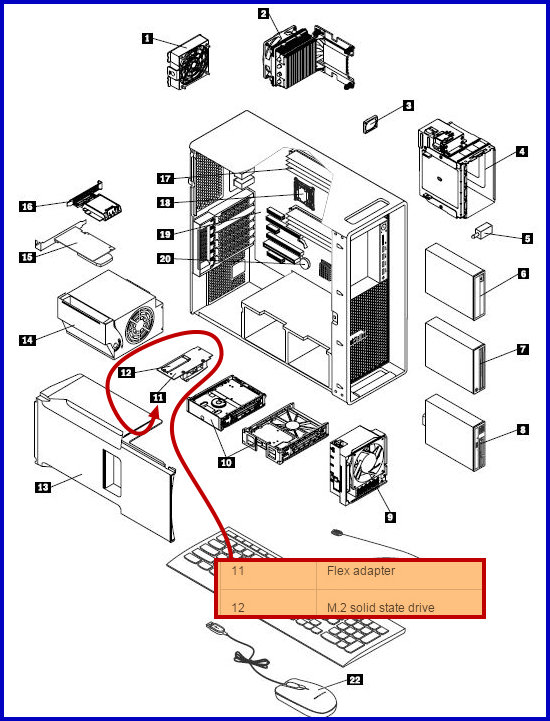

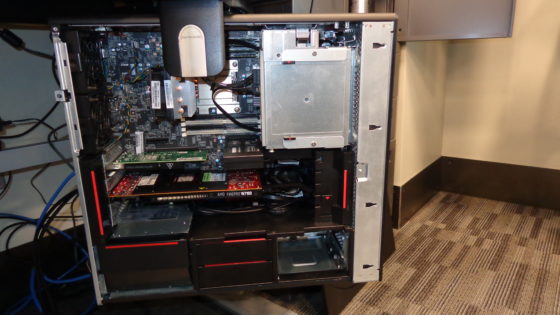
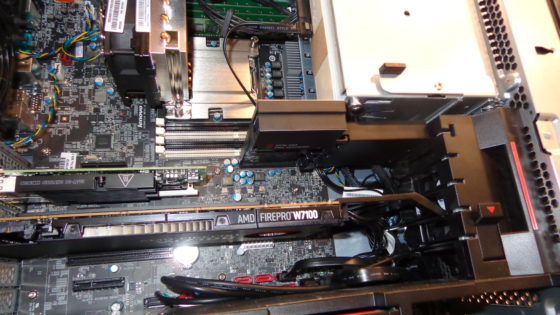
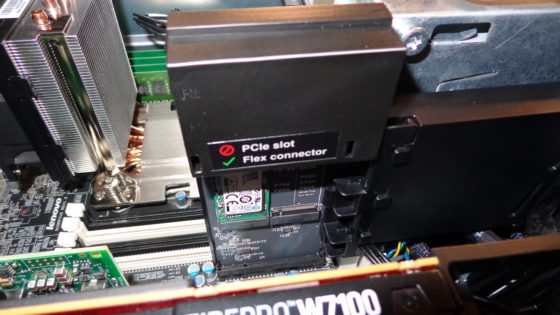

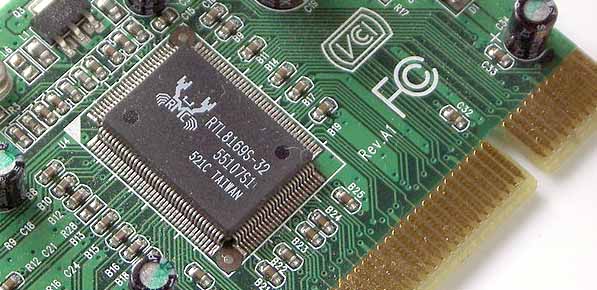






Blaine C.
Kris – thanks for a great write-up! I was preparing to do the same exact build for a Revit workstation except with an E5-2367v3 & the K4200. I would like to use the M.2 card as both my boot & data drive – is that possible? My IT guy can’t seem to get me an answer. Also, how are you liking the 10gb to the server? Can that be done over CAT6?
Blaine C.
I also have the 1630 right now – it’s great.
Kris Bunda
Hi Blaine – Thank you!
The 10gb to the server REALLY made a difference. Large CAD files that had taken 30seconds to open may open in 7 or 10 seconds now. Or at least that’s my perception. I don’t want to set you up for too high expectations though, it’s not immediate. Also, I’m bitterly disappointed in how much of a bottleneck the internet service remains to be for when I try to open CAD files over VPN remotely. And yes, I believe our IT person said it had to be over CAT6, and he specifically had to patch that line into my workstation area (as opposed to the CATV ports on the wall outlet next to it).
The M.2 is really good. Even though I moved it from the Lenovo mezzanine card to another PCIe x4 slot (I don’t remember if I explained all that), it doesn’t seem to make a difference. I’m thinking both the FLEX slot and another PCIe 3.0 x4 lanes slot are theoretically the same thing.
You could definitely have your m.2 as both a boot and the drive you keep a lot of your files on – just like when you buy most computers, they often only have one hard drive. My only problem is that CAD files tend to get so large so fast that I’d rather just have them on a second (also fast) drive, like a different SSD. I’ve even gained more respect for mechanical drives, like the 2.5″ 10,000 RPM ones. I have one in my laptop to store some CAD files and photos on, and they load surprisingly fast. But I still require an SSD as the boot drive for the OS and programs to run from.
Hope my opinions answer your questions. If your IT person has some questions on setting up the M.2 with another drive (or if he’s having probs getting M.2 to work as boot drive for windows7), let me know, maybe I can help. There’s also a VERY helpful Lenovo staffer on the Lenovo forums with screen name “PSTurtle” (if memory serves). That person really helped me along in understanding much of the new “FLEX” module stuff Lenovo is selling that has such obscure and confusing documentation.
You’re reminding me that I should make a followup post on setting up the BIOS to use the m.2 card in a riser card in a different slot, while using the mezzanine “FLEX” slot for the HDD bays via LSI RAID card, and how to then set the m.2 card as boot and still have any other drives you push into the bays show up in the operating system. Because it wasn’t exactly intuitive. And it wasn’t automatic by any means.
Kris Bunda
Yes, that’s a real snappy processor, I’m really happy with it.
Frankly, I don’t understand why anyone would take more cores over speed, at least when it comes to most CAD tasks. Sure, on SolidWorks drawings, each view supposedly is assigned to a different core, making for “multi threading”. But aside from drawings, most modeling or simulation can pretty much only be single threaded linear solving (last I knew).
Perhaps it’s a completely different story for other CAD that isn’t solid model-focused.